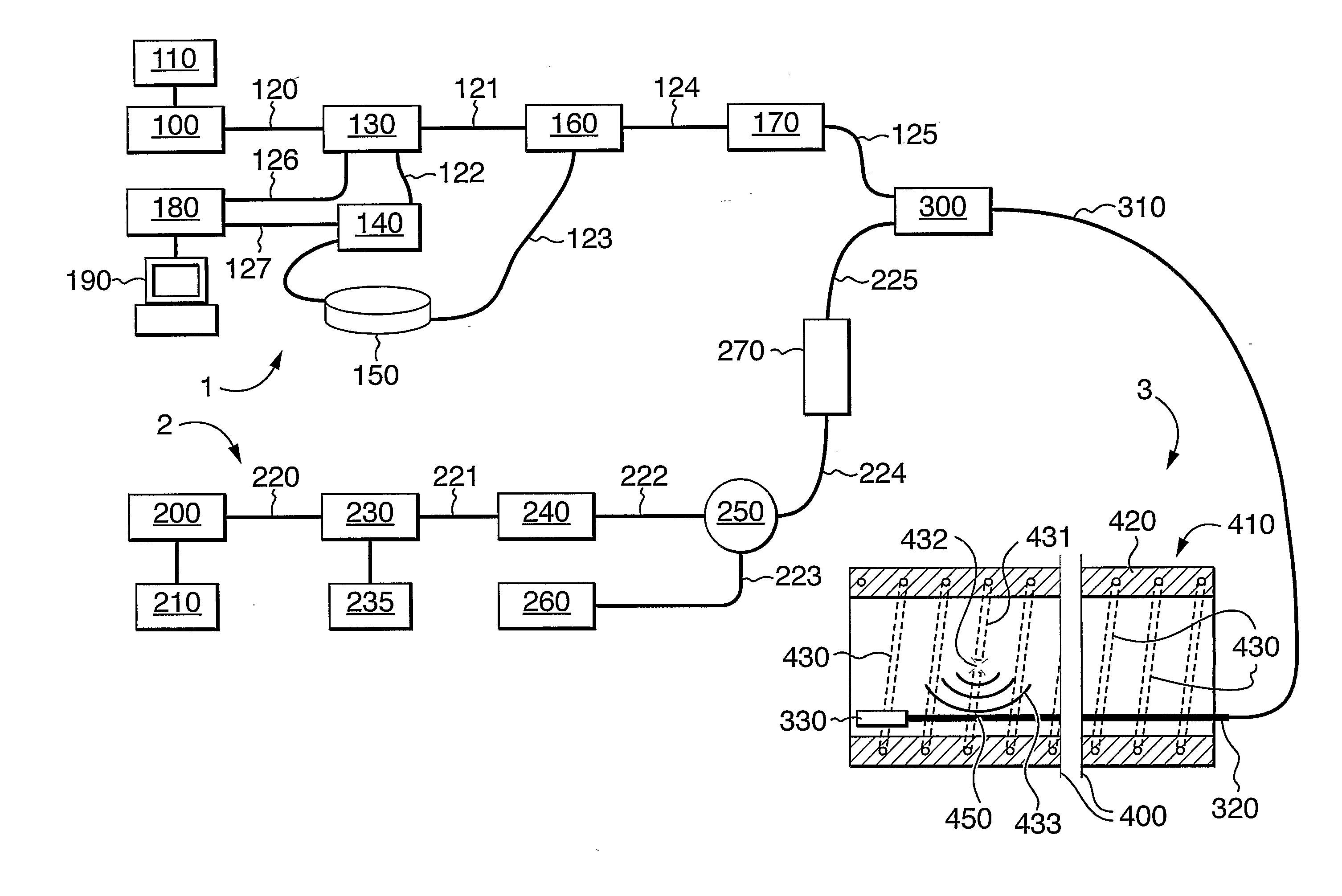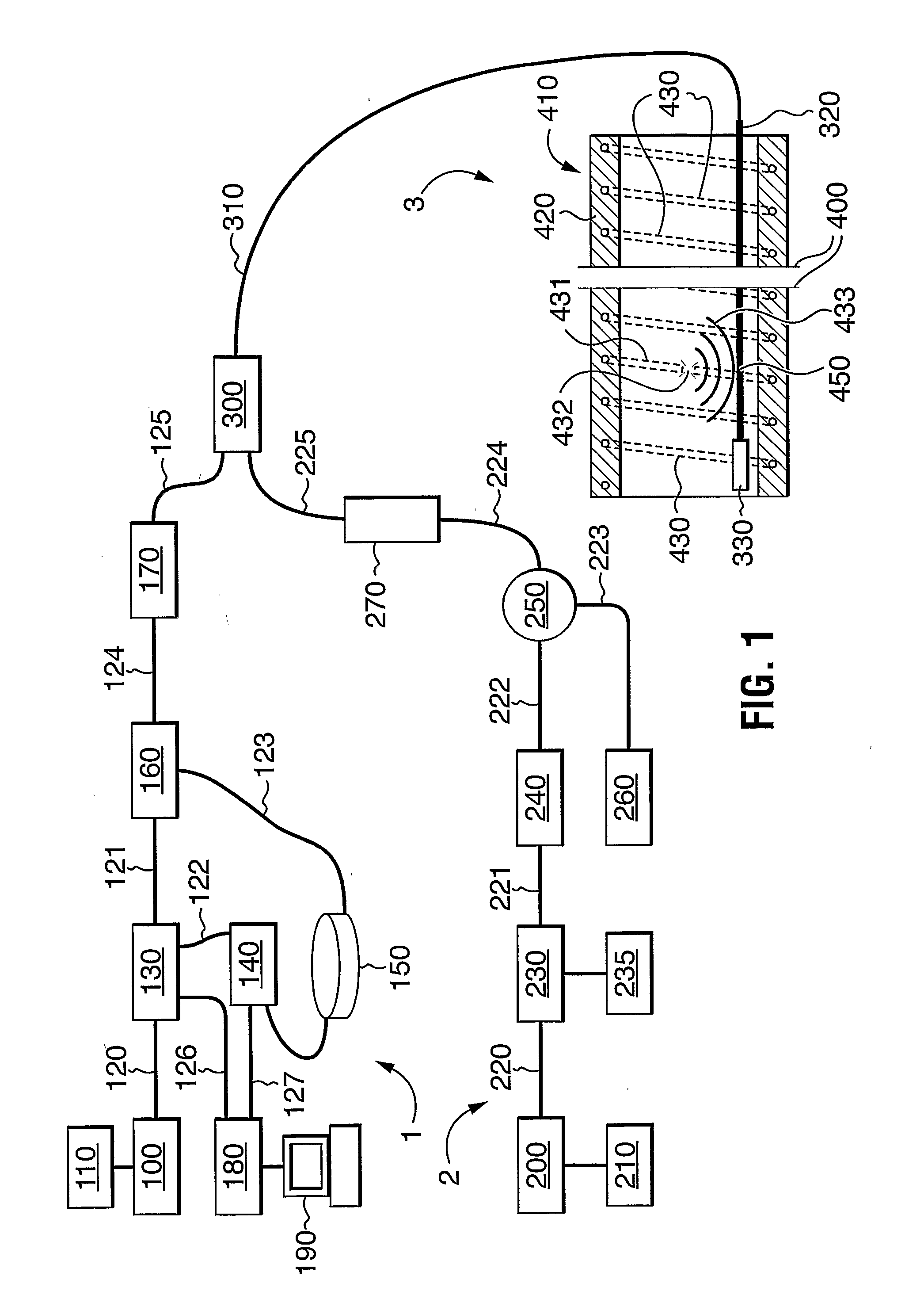Fibre Optic Sensor Method and Apparatus
a sensor and fiber optic technology, applied in the direction of alarms, structural/machine measurement, indication/recording movement, etc., can solve the problems of difficult to find the location at which the disturbance occurred along the length of the interferometer sensor, the effect of the fiber optic sensor not being very effective, and the sensor dependent on the reflection of a puls
- Summary
- Abstract
- Description
- Claims
- Application Information
AI Technical Summary
Benefits of technology
Problems solved by technology
Method used
Image
Examples
example
[0059] The use of the apparatus to determine events of interest will be described with respect to a test facility. The test facility was set up as FIG. 2. Sensor 320a had a sensor length of 10 kilometers, and was laid in a disused concrete water pipe. Sensors 320b and sensor 320a were two individual fibres within a single fibre optic cable, and were of the same length.
[0060] The interferometric sensor had a wavelength of 1310 nm. The pulsed OTDR sensor had a wavelength of 1550 nm, and was set to scan the length of the optical fibre every 10 milliseconds. Each scan took 200 microseconds. At least 750 scans of the OTDR were retained in memory. As each new scan was added, the oldest scan was dropped.
[0061] For the purpose of the test, it was determined that an event of interest would be any event that gave an analog signal of greater than 5 volts on an analog output in the particular test facility. The analog output was an arbitrary representation of disturbances in the interferometr...
PUM
 Login to View More
Login to View More Abstract
Description
Claims
Application Information
 Login to View More
Login to View More - R&D
- Intellectual Property
- Life Sciences
- Materials
- Tech Scout
- Unparalleled Data Quality
- Higher Quality Content
- 60% Fewer Hallucinations
Browse by: Latest US Patents, China's latest patents, Technical Efficacy Thesaurus, Application Domain, Technology Topic, Popular Technical Reports.
© 2025 PatSnap. All rights reserved.Legal|Privacy policy|Modern Slavery Act Transparency Statement|Sitemap|About US| Contact US: help@patsnap.com



